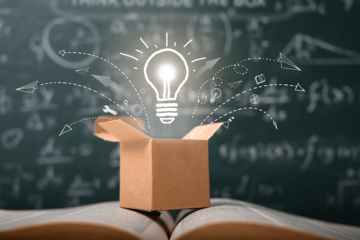We found 120 results that contain "data communication"
Posted on: QA groups


Data communications
Data communications refers to the transmission of this digital data between two or more computers and a computer network or data network is a telecommunications network that allows computers to exchange data. The physical connection between networked computing devices is established using either cable media or wireless media. The best-known computer network is the Internet.
Posted on: QA groups


Data communications
Data communications refers to the transmission of this digital data between two or more computers and a computer network or data network is a telecommunications network that allows computers to exchange data. The physical connection between networked computing devices is established using either cable media or wireless media. The best-known computer network is the Internet.
Posted on: #iteachmsu


Communication to Support Student Learning in a Digital Learning Environment
What is communication (and what isn’t it)?
The P21 framework emphasizes effective use of oral, written, and nonverbal communication skills for multiple purposes (e.g., to inform, instruct, motivate, persuade, and share ideas). It also focuses on effective listening, using technology to communicate, and being able to evaluate the effectiveness of communication efforts—all within diverse contexts (adapted from P21). Note that working in partners is a great way to collaborate or build shared understanding but a critical part of communication is sharing with an authentic audience.
The P21 framework emphasizes effective use of oral, written, and nonverbal communication skills for multiple purposes (e.g., to inform, instruct, motivate, persuade, and share ideas). It also focuses on effective listening, using technology to communicate, and being able to evaluate the effectiveness of communication efforts—all within diverse contexts (adapted from P21). Note that working in partners is a great way to collaborate or build shared understanding but a critical part of communication is sharing with an authentic audience.
ASSESSING LEARNING
Posted on: #iteachmsu


Communication to Support Student Learning in a Digital Learning Environment
Educator provides evidence of their understanding of communication and outlines and provides evidence of a lesson that uses technology to support students’ use of communication in learning.
Posted on: #iteachmsu


Data Science in Digital Marketing
The digital revolution is now sweeping small towns and villages perhaps driven by increased accessibility at affordable data costs? The whole world is in our hands and the increase in the usage of digital in rural India, where more than two-thirds of active internet users are present is a great opportunity and a win-win situation for both. They are trying to meet their entertainment and communication needs and we can help them provide the best of service in addition to winning their hearts and pocket.
ASSESSING LEARNING
Posted on: QA groups


Data communications
Data communications refers to the transmission of this digital data between two or more computers and a computer network or data network is a telecommunications network that allows computers to exchange data. The physical connection between networked computing devices is established using either cable media or wireless media. The best-known computer network is the Internet.
Posted by: Super Admin
Posted on: #iteachmsu

Data availability
Just over 3 billion people are online with an estimated 17 billion connected devices or sensors. [9] That generates a large amount of data which, combined with decreasing costs of data storage, is easily available for use. Machine learning can use this as training data for learning algorithms, developing new rules to perform increasingly complex tasks.
Just over 3 billion people are online with an estimated 17 billion connected devices or sensors. That generates a large amount of data which, combined with decreasing costs of data storage, is easily available for use. Machine learning can use this as training data for learning algorithms, developing new rules to perform increasingly complex tasks.
Just over 3 billion people are online with an estimated 17 billion connected devices or sensors. [9] That generates a large amount of data which, combined with decreasing costs of data storage, is easily available for use. Machine learning can use this as training data for learning algorithms, developing new rules to perform increasingly complex tasks.
Just over 3 billion people are online with an estimated 17 billion connected devices or sensors. That generates a large amount of data which, combined with decreasing costs of data storage, is easily available for use. Machine learning can use this as training data for learning algorithms, developing new rules to perform increasingly complex tasks.
Just over 3 billion people are online with an estimated 17 billion connected devices or sensors. That generates a large amount of data which, combined with decreasing costs of data storage, is easily available for use. Machine learning can use this as training data for learning algorithms, developing new rules to perform increasingly complex tasks.
Just over 3 billion people are online with an estimated 17 billion connected devices or sensors. [9] That generates a large amount of data which, combined with decreasing costs of data storage, is easily available for use. Machine learning can use this as training data for learning algorithms, developing new rules to perform increasingly complex tasks.
Just over 3 billion people are online with an estimated 17 billion connected devices or sensors. That generates a large amount of data which, combined with decreasing costs of data storage, is easily available for use. Machine learning can use this as training data for learning algorithms, developing new rules to perform increasingly complex tasks.
Posted by: Chathuri Super admin..
Posted on: #iteachmsu


What Is Big Data? and How Big Data Works?
Big data:Big data refers to the large, diverse sets of information that grow at ever-increasing rates. It encompasses the volume of information, the velocity or speed at which it is created and collected, and the variety or scope of the data points being covered (known as the "three v's" of big data).
Big data is a great quantity of diverse information that arrives in increasing volumes and with ever-higher velocity.
Big data can be structured (often numeric, easily formatted and stored) or unstructured (more free-form, less quantifiable).
Nearly every department in a company can utilize findings from big data analysis, but handling its clutter and noise can pose problems.
Big data can be collected from publicly shared comments on social networks and websites, voluntarily gathered from personal electronics and apps, through questionnaires, product purchases, and electronic check-ins.
Big data is most often stored in computer databases and is analyzed using software specifically designed to handle large, complex data sets.
How Big Data Works
Big data can be categorized as unstructured or structured. Structured data consists of information already managed by the organization in databases and spreadsheets; it is frequently numeric in nature. Unstructured data is information that is unorganized and does not fall into a predetermined model or format. It includes data gathered from social media sources, which help institutions gather information on customer needs.
Big data can be collected from publicly shared comments on social networks and websites, voluntarily gathered from personal electronics and apps, through questionnaires, product purchases, and electronic check-ins. The presence of sensors and other inputs in smart devices allows for data to be gathered across a broad spectrum of situations and circumstances.
Big data is a great quantity of diverse information that arrives in increasing volumes and with ever-higher velocity.
Big data can be structured (often numeric, easily formatted and stored) or unstructured (more free-form, less quantifiable).
Nearly every department in a company can utilize findings from big data analysis, but handling its clutter and noise can pose problems.
Big data can be collected from publicly shared comments on social networks and websites, voluntarily gathered from personal electronics and apps, through questionnaires, product purchases, and electronic check-ins.
Big data is most often stored in computer databases and is analyzed using software specifically designed to handle large, complex data sets.
How Big Data Works
Big data can be categorized as unstructured or structured. Structured data consists of information already managed by the organization in databases and spreadsheets; it is frequently numeric in nature. Unstructured data is information that is unorganized and does not fall into a predetermined model or format. It includes data gathered from social media sources, which help institutions gather information on customer needs.
Big data can be collected from publicly shared comments on social networks and websites, voluntarily gathered from personal electronics and apps, through questionnaires, product purchases, and electronic check-ins. The presence of sensors and other inputs in smart devices allows for data to be gathered across a broad spectrum of situations and circumstances.
Authored by: Rupali
Posted on: #iteachmsu


Home-School Collaboration, and Communication
Families are invaluable resources for teachers.
Websites: A homework website that provides assignments for the week is very helpful toparents and guardians of students with ADHD. Class news regarding projects and theweek’s instructional topics can also be posted.
Homework Hotline: A homework hotline that gives the assignments for the night andalso provides helpful suggestions for completing them can help families support theirchildren’s work completion.
We should emphasis a point here: ADHD is not caused by bad parenting
Causes for mental disorders are very difficult to pinpoint, but the general consensus is that they are products of the interaction of genetics with the environment.
Certain people who have genes that influence how the brain processes dopamine may be at increased risk for ADHD, but having the genes doesn’t necessarily mean a person will show signs of the condition.
Websites: A homework website that provides assignments for the week is very helpful toparents and guardians of students with ADHD. Class news regarding projects and theweek’s instructional topics can also be posted.
Homework Hotline: A homework hotline that gives the assignments for the night andalso provides helpful suggestions for completing them can help families support theirchildren’s work completion.
We should emphasis a point here: ADHD is not caused by bad parenting
Causes for mental disorders are very difficult to pinpoint, but the general consensus is that they are products of the interaction of genetics with the environment.
Certain people who have genes that influence how the brain processes dopamine may be at increased risk for ADHD, but having the genes doesn’t necessarily mean a person will show signs of the condition.
Authored by: Admin
Disciplinary Content
Posted on: #iteachmsu


Business Intelligence and Data Science
Business Intelligence and Data Science are two of the most recurring terms in the digital era. While both of them involve the use of data, they are totally different from one another. Data Science is the bigger pool containing greater information, BI can be thought of as a part of the bigger picture.
What is Business Intelligence?
Business Intelligence is a process of collecting, integrating, analyzing, and presenting the data. With Business Intelligence, executives and managers can have a better understanding of decision-making. This process is carried out through software services and tools.
Using Business Intelligence, organizations are able to several strategic and operational business decisions. Furthermore, BI tools are used for the analysis and creation of reports. They are also used for producing graphs, dashboards, summaries, and charts to help the business executives to make better decisions.
What is Business Intelligence?
Business Intelligence is a process of collecting, integrating, analyzing, and presenting the data. With Business Intelligence, executives and managers can have a better understanding of decision-making. This process is carried out through software services and tools.
Using Business Intelligence, organizations are able to several strategic and operational business decisions. Furthermore, BI tools are used for the analysis and creation of reports. They are also used for producing graphs, dashboards, summaries, and charts to help the business executives to make better decisions.
Authored by: Rupali
Assessing Learning
Posted on: Group 2


ADHD Students, Home-School Collaboration, and Communication
Families are invaluable resources for teachers.
Websites: A homework website that provides assignments for the week is very helpful toparents and guardians of students with ADHD. Class news regarding projects and theweek’s instructional topics can also be posted.
Websites: A homework website that provides assignments for the week is very helpful toparents and guardians of students with ADHD. Class news regarding projects and theweek’s instructional topics can also be posted.
Posted by: Vijayalaxmi Vishavnathkam Santosh Mali
Posted on: #iteachmsu


ADHD Students, Home-School Collaboration, and Communication - ADDED
ADHD Students, Home-School Collaboration, and Communication - ADDED
Families are invaluable resources for teachers.
Websites: A homework website that provides assignments for the week is very helpful toparents and guardians of students with ADHD. Class news regarding projects and theweek’s instructional topics can also be posted.
Families are invaluable resources for teachers.
Websites: A homework website that provides assignments for the week is very helpful toparents and guardians of students with ADHD. Class news regarding projects and theweek’s instructional topics can also be posted.
Posted by: Super Admin
Disciplinary Content
Posted on: #iteachmsu


Develop and actively communicate your course-level generative AI policy
1. Consider how AI technology might compel you to revise your course assignments, quizzes, and tests to avoid encouraging unethical or dishonest use of generative AI. 2. Develop and integrate a generative AI policy throughout the course resources:
Provide clear definitions, expectations, and repercussions of what will happen if students violate the policy.
Explain the standards of academic integrity in the course, especially as related to use of AI technologies, and review the Integrity of Scholarship and Grades Policy.
Be clear about what types of AI are acceptable and what versions of the technology students can use or not use.
Put this policy into D2L and any assignment instructions consistently.
3. Discuss these expectations when talking about course policies at the beginning of the course and remind students about them as you discuss course assignments:
Take time to explain to students the pros and cons of generative AI technologies relative to your course.
Explain the development of your policy and make clear the values, ethics, and philosophies underpinning its development.
Explain the repercussions of not following the course policy and submit an Academic Dishonesty Report if needed.
4. If you want to integrate AI in the classroom as an allowed or required resource:
Consult with MSU IT guidance about recommendations for use and adoption of generative AI technology, including guidelines for keeping you and your data safe.
Determine if MSU already has access to the tools you desire for free, and if not available through MSU, consider the cost and availability of the resources you will allow or require, and go through MSU's procurement process.
If you want to require students to use an AI technology that comes with a cost, put the resource into the scheduling system as you would a textbook, so students know that is an anticipated cost to them.
Provide clear definitions, expectations, and repercussions of what will happen if students violate the policy.
Explain the standards of academic integrity in the course, especially as related to use of AI technologies, and review the Integrity of Scholarship and Grades Policy.
Be clear about what types of AI are acceptable and what versions of the technology students can use or not use.
Put this policy into D2L and any assignment instructions consistently.
3. Discuss these expectations when talking about course policies at the beginning of the course and remind students about them as you discuss course assignments:
Take time to explain to students the pros and cons of generative AI technologies relative to your course.
Explain the development of your policy and make clear the values, ethics, and philosophies underpinning its development.
Explain the repercussions of not following the course policy and submit an Academic Dishonesty Report if needed.
4. If you want to integrate AI in the classroom as an allowed or required resource:
Consult with MSU IT guidance about recommendations for use and adoption of generative AI technology, including guidelines for keeping you and your data safe.
Determine if MSU already has access to the tools you desire for free, and if not available through MSU, consider the cost and availability of the resources you will allow or require, and go through MSU's procurement process.
If you want to require students to use an AI technology that comes with a cost, put the resource into the scheduling system as you would a textbook, so students know that is an anticipated cost to them.
Authored by: Super admin user
Posted on: QA groups

Data communications refers to the transmission of this digital data between two or more computers and a computer network or data network is a telecommunications network that allows computers to exchange data. The physical connection between networked computing devices is established using either cable media or wireless media. The best-known computer network is the Internet.
Posted by: Super Admin
Posted on: #iteachmsu
![Article preview image]()
Big data is a collection of large datasets that cannot be processed using traditional computing techniques. Testing of these datasets involves various tools, techniques and frameworks to process. Big data relates to data creation, storage, retrieval and analysis that is remarkable in terms of volume, variety, and velocity. You can learn more about Big Data, Hadoop and Mapreduce here In this tutorial we will learn, Testing Big Data application is more a verification of its data processing rather than testing the individual features of the software product. When it comes to Big data testing, performance and functional testing are the key. In Big data testing QA engineers verify the successful processing of terabytes of data using commodity cluster and other supportive components. It demands a high level of testing skills as the processing is very fast. Processing may be of three types Along with this, data quality is also an important factor in big data testing. Before testing the application, it is necessary to check the quality of data and should be considered as a part of database testing. It involves checking various characteristics like conformity, accuracy, duplication, consistency, validity, data completeness, etc.
Posted by: E3 PGA
Posted on: #iteachmsu

Data Science::
Data Science is a comprehensive process that involves preprocessing, analysis, visualization, and prediction. On the other hand, AI is the implementation of a predictive model to forecast future events.
A Data Scientist, on the other hand, helps the company and businesses to make careful data-driven decisions. A Data Scientist is responsible for extracting data using SQL and NoSQL queries, cleaning various anomalies in the data, analyzing the patterns in data, and applying predictive models.
Data Science is a comprehensive process that involves preprocessing, analysis, visualization, and prediction. On the other hand, AI is the implementation of a predictive model to forecast future events.
A Data Scientist, on the other hand, helps the company and businesses to make careful data-driven decisions. A Data Scientist is responsible for extracting data using SQL and NoSQL queries, cleaning various anomalies in the data, analyzing the patterns in data, and applying predictive models.
Posted by: Rupali Jagtap
Assessing Learning
Posted on: #iteachmsu
![Article preview image]()
Big data is more than high-volume, high-velocity data. Learn what big data is, why it matters and how it can help you make better decisions every day.
Posted by: E3 PGA
Disciplinary Content
Posted on: #iteachmsu

Data Science is a process of extracting, manipulating, visualizing, maintaining data as well as generating predictions.
A Data Scientist is supposed to have knowledge of various data operations as well as machine learning algorithms. Using Data Science, industries are able to extract insights and forecast their performance.
A Data Scientist is supposed to have knowledge of various data operations as well as machine learning algorithms. Using Data Science, industries are able to extract insights and forecast their performance.
Posted by: Chathuri Super admin..
Assessing Learning
Posted on: #iteachmsu

What is communication (and what isn’t it)?
The P21 framework emphasizes effective use of oral, written, and nonverbal communication skills for multiple purposes (e.g., to inform, instruct, motivate, persuade, and share ideas). It also focuses on effective listening, using technology to communicate, and being able to evaluate the effectiveness of communication efforts—all within diverse contexts (adapted from P21). Note that working in partners is a great way to collaborate or build shared understanding but a critical part of communication is sharing with an authentic audience.
REF:What is communication (and what isn’t it)?
The P21 framework emphasizes effective use of oral, written, and nonverbal communication skills for multiple purposes (e.g., to inform, instruct, motivate, persuade, and share ideas). It also focuses on effective listening, using technology to communicate, and being able to evaluate the effectiveness of communication efforts—all within diverse contexts (adapted from P21). Note that working in partners is a great way to collaborate or build shared understanding but a critical part of communication is sharing with an authentic audience.
The P21 framework emphasizes effective use of oral, written, and nonverbal communication skills for multiple purposes (e.g., to inform, instruct, motivate, persuade, and share ideas). It also focuses on effective listening, using technology to communicate, and being able to evaluate the effectiveness of communication efforts—all within diverse contexts (adapted from P21). Note that working in partners is a great way to collaborate or build shared understanding but a critical part of communication is sharing with an authentic audience.
REF:What is communication (and what isn’t it)?
The P21 framework emphasizes effective use of oral, written, and nonverbal communication skills for multiple purposes (e.g., to inform, instruct, motivate, persuade, and share ideas). It also focuses on effective listening, using technology to communicate, and being able to evaluate the effectiveness of communication efforts—all within diverse contexts (adapted from P21). Note that working in partners is a great way to collaborate or build shared understanding but a critical part of communication is sharing with an authentic audience.
Posted by: Chathuri Super admin..
Navigating Context
Posted on: #iteachmsu

Machine-generated data is information automatically generated by a computer process, application, or other mechanism without the active intervention of a human. While the term dates back over fifty years,[1] there is some current indecision as to the scope of the term. Monash Research's Curt Monash defines it as "data that was produced entirely by machines OR data that is more about observing humans than recording their choices."[2] Meanwhile, Daniel Abadi, CS Professor at Yale, proposes a narrower definition, "Machine-generated data is data that is generated as a result of a decision of an independent computational agent or a measurement of an event that is not caused by a human action."[3] Regardless of definition differences, both exclude data manually entered by a person.[4] Machine-generated data crosses all industry sectors. Often and increasingly, humans are unaware their actions are generating the data.[
Posted by: Chathuri Super admin..
Assessing Learning
Host: MSU Libraries

Best Practices in Data Visualization
Learn general best practices for creating data visualizations. This workshop will describe the overarching goals of data visualization and provide criteria for evaluating the effectiveness of a visualization. This workshop will also offer tool suggestions for beginners exploring data visualization.
Navigating Context
Host: MSU Libraries

Data Management Plans: Yes, you need one and here is how to create them
An overview of why data management plans are important and often required, and how to develop one. We will look at the items commonly included in all data management plans regardless of agency/institutional requirements, some examples of specific funding agency templates and review what resources are available to help you draft your plan.
Navigating Context
Host: MSU Libraries

Research Data Management: Best Practices for organizing and managing your data
Why is research data management so important? This workshop will help you plan for organizing and managing your data from the outset of your project.
We will look at some basic best practices for:
organizing your data
cleaning/prepping/working with your data
working with multiple data files
storage solutions
long-term archiving and making your data accessible to other researchers
Navigating Context
Host: MSU Libraries

3D Terrain Elevation Models for 3D Printing (Online)
Learn how to produce a 3D model of terrain elevation for printing on a 3D printer. We will learn about 3D models for 3D printing, digital elevation models (DEMs), where to find DEM data to create our printable export, and then use a plug in DEMto3D in the open source software QGIS to create a model. If time allows, basic tools for 3D model editing in Meshmixer or slicing software will be demonstrated.
Navigating Context
Host: MSU Libraries

Intro to 360 Cameras, 3D Scanners, & Other Digitization Equipment @ DSL: Drop-in Session
Immersive data is everywhere. It's in every digital asset you see in a video game, a YouTube 360 video and the panoramic pictures you take with your mobile device. Drop in to learn about how 360 cameras, 3D scanners and our digitization equipment is used to create these new experiences and apply them to your research, assignments and presentations.
Navigating Context
Host: MSU Libraries

Learn QGIS: Making a color shaded map in QGIS (Online)
Learn the basics of QGIS, the free open-source geospatial software—this workshop will demonstrate how to make a choropleth (color shaded) map and place graduated symbols representing data on it, load shape-files and .csv table files into QGIS, join data to spatial information and edit features. No experience with QGIS or Geographic Information Systems is required.
Navigating Context
Host: #iteachmsu


Computer Fundamentals
Computer is an advanced electronic device that takes raw data as an input from the user and processes it under the control of a set of instructions (called program), produces a result (output), and saves it for future use. This tutorial explains the foundational concepts of computer hardware, software, operating systems, peripherals, etc. along with how to get the most value and impact from computer technology.
Host: CTLI

Supporting Student Success Through Early Warning: Strategies for Graduate Teaching Assistants
On behalf of the GREAT office at The Graduate School, check out Supporting Student Success Through Early Warning: Strategies for Graduate Teaching Assistants
Date: Wednesday, September 10, 2025 - 11:00am to 12:00pm
Location: Zoom
Audience: Current Graduate Students & Postdocs
This interactive session is designed to support Graduate Teaching Assistants in recognizing and responding to early signs that students may be in need of support. Participants will explore their role in MSU’s early warning efforts and develop practical strategies to promote academic engagement, connection, and timely support. The session will include discussion of common indicators that students may be facing challenges affecting their educational success, strategies for effective communication, and how to use campus resources and reporting tools like EASE to provide timely support.
Facilitator(s):
Kanchan Pavangadkar, Director of Student Success for the College of Agriculture and Natural Resources (CANR)
Dwight Handspike, Director of Academic Advising & Student Success Initiatives, Undergraduate Academic Services, Broad College of Business
Samantha Zill, Human Biology & Pre-Health Advisor, Michigan State University, College of Natural Science
Maria O'Connell, University Innovation Alliance Fellow, Undergraduate Student Success Strategic Initiatives Manager, Office of Undergraduate Education
Register Here
**Zoom link will be sent closer to the workshop date.
Navigating Context
EXPIRED


